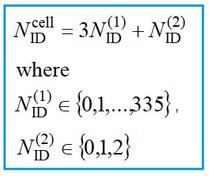5G NR EVM Measurement: Test Procedure and Requirements
Advertisement
This page describes 5G NR EVM Measurement as defined in 3GPP. The EVM test and measurement procedure and EVM formula/equations used in 5G NR system are also explained. It mentions 5G NR BS (Base Station) EVM requirements or limits for different BS classes/types.
Introduction
- EVM or Error vector magnitude provides insight into the quality of the modulated signal/symbol.
- This modulated signal originates when bits are mapped to symbols in complex modulation systems such as QPSK, 16-QAM, 64-QAM, etc.
- It is also referred to as RCE (Relative Constellation Error).
- It can be expressed in units of “dB” or “rms”.


The figure-1 depicts the concept of EVM measurement. The basic EVM equation is also mentioned.
5G NR EVM Measurement

As shown in the module level diagram for part of the 5G NR physical layer receiver, EVM is measured after FFT and after channel equalization (i.e., after zero-forcing equalizer). EVM is measured after all the transmitter impairments and channel impairments are compensated at the baseband receiver.
As shown in the formula-1, EVM is measured over one subframe duration (i.e., 1 ms) and () RB subcarriers (i.e., 180 KHz) in the frequency domain.

Where:
- T = Set of symbols with the selected modulation type within the subframe
- F(t) = Set of carriers within () RB subcarriers with the selected modulation type within symbol ‘t’
- I(t,f) = Ideal reconstructed signal by equipment in accordance with relevant Tx models.
- Z’(t,f) = Modified signal under test as per the following equation-2.

Where:
- z(v) = Time domain samples of the signal under test
- t = Sample time difference between ideal and FFT processed samples
- f = RF Frequency Offset
- (f) = Phase Response of Tx Chain
- a (f) = Amplitude Response of Tx Chain
Average EVM

The equation-3 used to calculate the average EVM. EVM is averaged over all allocated DL (downlink) RBs (Resource Blocks) with selected modulation type in the frequency domain. A minimum of 10 downlink subframes are used.
Where:
- Ni = Number of RBs with the selected modulation in subframe “i”
- Ndl is the number of allocated DL subframes in one frame.
5G NR EVM compliance limit
- FR1 (i.e., sub-6 GHz) frequency range: Residual EVM measurement should be less than 0.5% (-46.0 dB)
- FR2 (i.e., mmwave) frequency range: Residual EVM measurement should be less than 0.75% (-42.5 dB)
The following equation can be used to convert EVM (dB) to EVM (rms) and vice versa.

The following table-1 mentions EVM requirements or limits for BS classes 1-C and 1-H. PDSCH channel with the required modulation scheme should be used during testing.
Table 1: EVM requirements for BS Type-1C and BS Type 1-H
| Modulation type used for PDSCH | Required EVM (%) |
|---|---|
| QPSK | 17.5% |
| 16QAM | 12.5% |
| 64QAM | 8% |
| 256QAM | 3.5% |
Following table-2 mentions EVM requirements or limits for BS class 2-O. PDSCH channel with required modulation scheme should be used during testing.
Table 2: EVM requirements for BS Type 2-O
| Modulation type used for PDSCH | Required EVM (%) |
|---|---|
| QPSK | 17.5% |
| 16QAM | 12.5% |
| 64QAM | 8% |
References
- TS 38.104 Base Station (BS) radio transmission and reception
Advertisement
 RF
RF

